EXERCISE 7.1
1. In quadrilateral ,
and bisects (see Fig. 7.16). Show that . What can you say about and ?
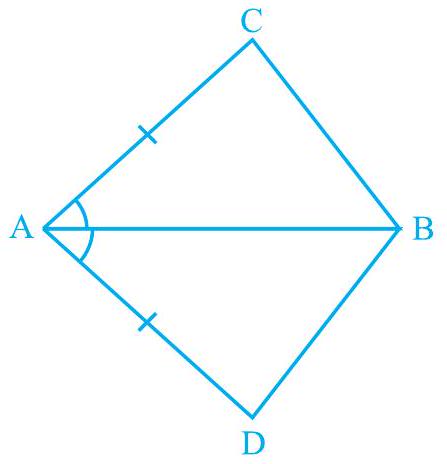
Fig. 7.16
Show Answer
Solution
. What can you say about and ?
In and ,
(Given)
bisects
(Common)
(By SAS congruence rule)
Therefore, BC and BD are of equal lengths.
2. is a quadrilateral in which and (see Fig. 7.17). Prove that
(i)
(ii)
(iii) .
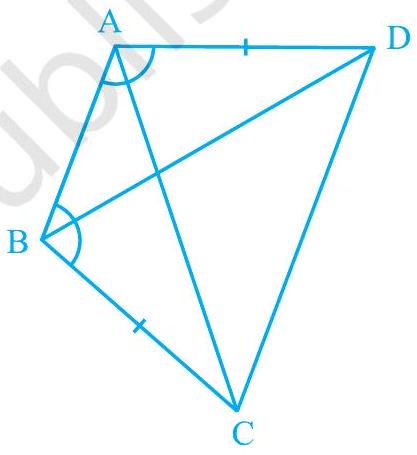
Show Answer
Solution
In and ,
Given)
Given)
(Common)
(By SAS congruence rule)
(By CPCT) And,
3. and are equal perpendiculars to a line segment (see Fig. 7.18). Show that CD bisects .
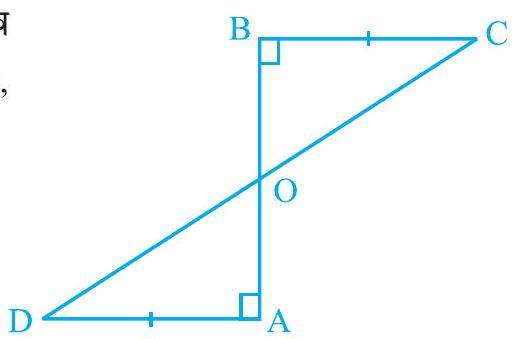
Show Answer
Solution
In and ,
4. and are two parallel lines intersected by another pair of parallel lines and (see Fig. 7.19). Show that .
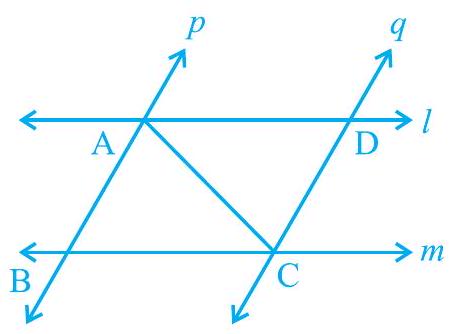
Fig. 7.19
Show Answer
Solution
In and ,
5. Line is the bisector of an angle and is any point on . and are perpendiculars from to the arms of (see Fig. 7.20). Show that:
(i)
(ii) or is equidistant from the arms of .

Fig. 7.20
Show Answer
Solution
In and ,
(Common)
(By AAS congruence rule)
BQ (By CPCT)
rms of . Or, it can be said that is equidistant from the a
6. In Fig. 7.21, and . Show that .

Fig. 7.21
Show Answer
Solution
It is given that
In and
(Given)
DAE (Proved above)
Given)
(By SAS congruence rule)
7. is a line segment and is its mid-point. and are points on the same side of such that and (see Fig. 7.22). Show that
(i)
(ii)
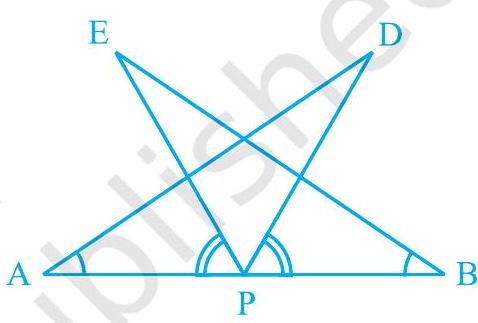
Fig. 7.22
Show Answer
Solution
It is given that EPA DPB
DPA ÉPB
In EBP,
DAP 岸 (Given)
is mid-point of
DPA EPB (From above)
DAP EBP (ASA congruence rule)
8. In right triangle , right angled at is the mid-point of hypotenuse AB. C is joined to and produced to a point such that . Point is joined to point (see Fig. 7.23). Show that:
(i)
(ii) is a right angle.
(iii)
(iv)

Fig. 7.23
Show Answer
Solution
(i) In and ,
( is the mid-point of )
AMC BMD (Vertically opposite angles)
(Given)
(By SAS congruence rule)
And,
ACM CPCT) ii)
However, AेंCM and ¿BDM are alternate interior angles.
Since alternate angles are equal,
It can be said that
(iii) In and ,
(Already proved)
Each 90
(Common)
(SAS congruence rule) iv)


















